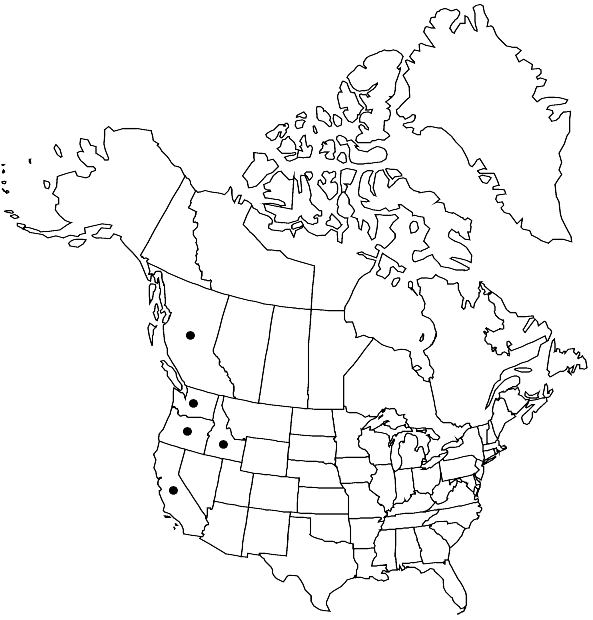Codriophorus varius
in R. Ochyra et al., Cens. Cat. Polish Mosses, 141. 2003,.
Plants mostly robust and coarse, loosely tufted or forming intricate patches, yellow, green, yellow, grayish or olive green distally, brown to blackish brown proximally. Stems 5–12 cm or sometimes to 20 cm, sometimes with short, lateral tuft-like branchlets. Leaves ovatelanceolate to lanceolate, from an ovate, plicate base, (2.5–) 3–3.7 (–4) × 1–1.2 (–1.5) mm; margins entire; apices slenderly or broadly acuminate, piliferous or muticous, subacute to narrowly rounded-obtuse, awns hyaline, 0.1–0.75 (–1.2) mm, erect to recurved, flattened, finely and irregularly spinulose-denticulate or denticulate; costa percurrent or subpercurrent, 75–100 (–110) µm wide at the base, in transverse-section 2-stratose in the distal portion, 3–4-stratose in the proximal part; basal laminal cells long-rectangular, (20–) 35–60 (–75) × 5–8 µm; medial laminal cells becoming elongate, (20–) 30–45 (–50) × 7–8 µm; distal laminal cells mostly short-rectangular, (8–) 13–20 (–30) × 7–8 µm. Inner perichaetial leaves oblong-lanceolate, longitudinally plicate, 2.2–2.5 × 0.9–1 mm, hyaline. Seta dark-brown, (0.6–) 1.2–2 (–2.2) cm. Capsule brown or yellowish-brown, lustrous, cylindric, (2.5–) 3–4.2 × 0.8–1 mm, smooth or somewhat sulcate when old and empty; peristome teeth dark reddish-brown, 1–1.8 mm long, faintly papillose to nearly smooth, regularly split nearly to the base into 2, threadlike, terete, equal or unequal branches. Spores 12–15 µm.
Habitat: Acidic to basic rocks, such as limestone, granite, diorite, basalt, serpentine, schist, and sandstone, concrete walls of buildings, sandy or clayey soil, humus, tree trunks and bases, in a wide range of habitats, from protected, shaded and damp or wet to open, fully or diffusely lit and dry in coastal mixed and coniferous forests, woodlands, grasslands, forest glades, also on the banks of streams, creeks and lakes and by waterfalls, usually in places above the flood line, but sometimes in occasionally submerged sites or on pockets of sand in stream beds, outcrops in fens, partially drained bogs, seepage, roadcuts and earthy roadside banks
Elevation: low to high elevations (0-1700 m)
Distribution

B.C., Calif., Idaho, Oreg., Wash.
Discussion
Codriophorus varius occurs predominantly at low elevations. It is widespread and locally common and abundant in coastal areas from the Queen Charlotte Islands southwards to central California, and only once recorded in the Rocky Mountains of northern Idaho. It is one of the most distinctive species of the genus, easily recognized by leaves usually with an awn, long cylindrical capsules, and very long peristome teeth, 1–1.8 mm, the longest in the genus, that are split to the base into two filiform branches. Sporophytes are usually produced in great profusion and enable easy identification. Epilose ecads of C. varius are likely to be mistaken for robust and coarse phenotypes of C. fascicularis, especially when sterile, but the species is distinct in having leaves plicate at the base, with shorter distal laminal cells, and a costa 3-stratose in transverse-section in the proximal half. Some specimens have occasionally been mistaken for Bucklandiella pacifica, which, however, has entirely smooth laminal cells that are mostly rounded-quadrate distally. The leaves of B. pacifica are narrowly canaliculate in the distal half, and generally smaller, less than 3 mm, with the margins broadly recurved to 2/3–3/4 of the leaf length on one side and more narrowly recurved to 1/2 the leaf length or plane on the other side. In addition, the capsules and peristome teeth are much shorter in the latter species.
Selected References
None.